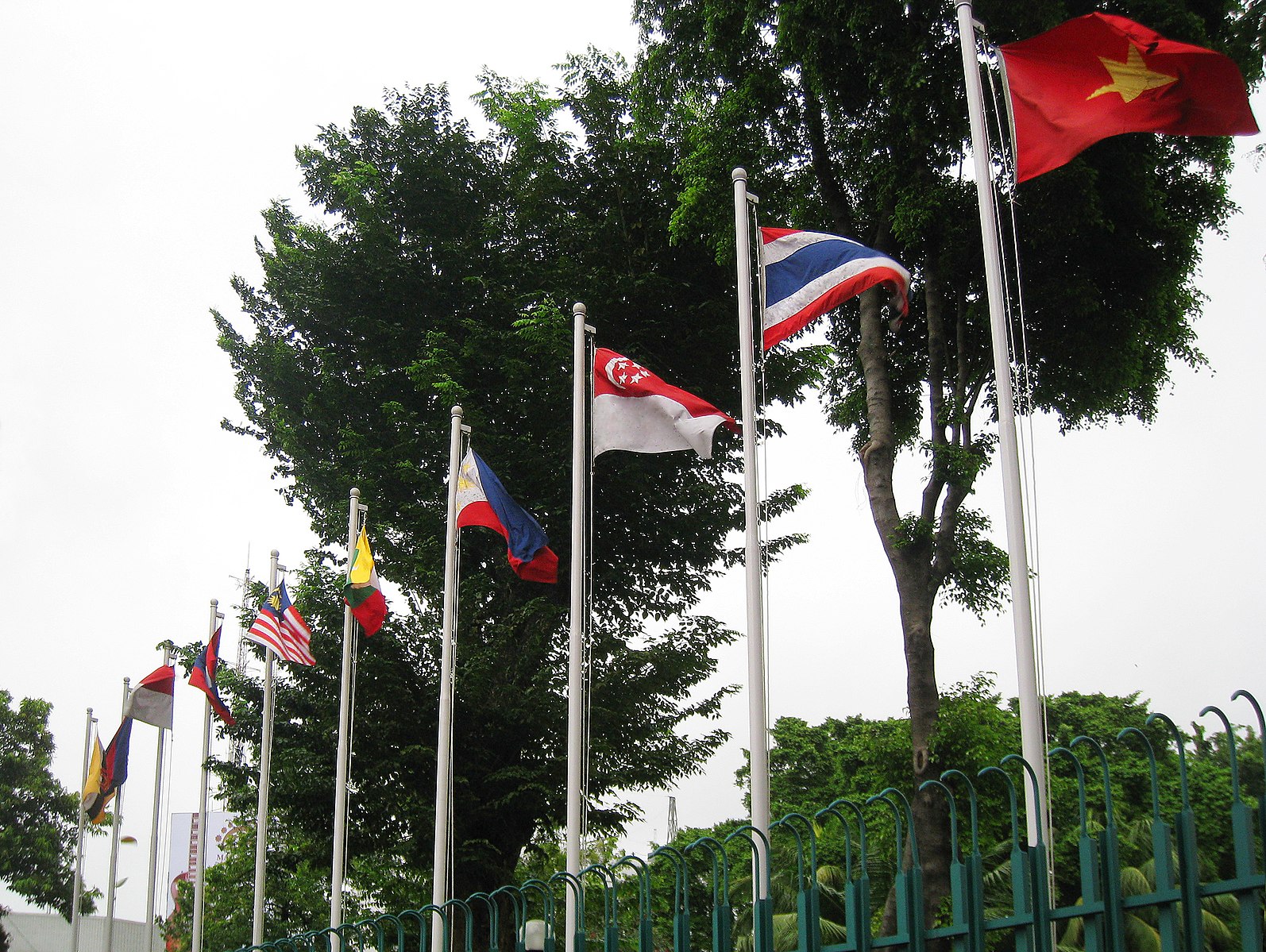Securing ASEAN’s Security amidst Geopolitical Divides
RSIS
APLN Chair Marty Natalegawa argues that the increasingly intense contestation among major powers necessitates renewal of a foresightful approach in maintaining the relevance of ASEAN and in securing its security. Read the original article here.
Not for the first time, an arc of instability looms before Southeast Asia.
To its west and northwest, an increasingly competitive China-India dynamics is finding its manifestation not only on the disputed land border areas, but also on the maritime domain in the Indian Ocean. This has become a major driver for a fluid and uncertain regional architecture, with India simultaneously demonstrating its traditional independent foreign policy orientation and willingness – on its own terms – to associate itself with arguably China-focused processes, such as the Quad.
Still on its northwestern flank, the dynamics between India and Pakistan, and developments in Afghanistan and the surrounding regions are still uncertain, which countries of Southeast Asia ignore at their peril.
Further north, the full implications of the burgeoning China-Russia ties are yet to be fully ascertained. The possibility of an action-reaction chain fueling geopolitical schisms in the Indo-Pacific between the US and its regional allies on the one side, and China and Russia on the other, is palpable.
Northeast Asia remains a tinderbox. The multilayered security threats pose the possibility of a perfect storm: the Korean peninsula dynamics, with the nuclear-armed and advanced missile-capable North Korea at its centre; unresolved issues between Japan-South Korea, Japan-Russia, and China-Japan, as well as the triangular US-China-Russia dynamics converge there.
In the East China Sea, sovereignty issues over land features, maritime delimitation disputes, as well as challenges to overlapping air exclusionary zones, pose risks of conflict from miscalculation directly involving China, Japan, South Korea, and Russia.
The cross-Strait dynamics has also recently turned for the worse, with elevated risks of open clashes dragging in allies and partners of the respective sides.
The potential for conflict in the South China Sea remains real. Aside from unintended conflict among the claimant states, the situation in the contested waters has become a magnet for rivalry among the major powers.
To the east of Southeast Asia – in the Pacific – an ocean which has long been marked by the preponderance of the US and its allies, is entering a period of uncertainty as China tests and prods.
The risks associated with these ominous dynamics are further elevated given several destabilising features. First, there is nuclear weapons proliferation, nuclear arms racing, and the absence of meaningful arms control and disarmament efforts. Second, the proliferation of ballistic missile capacities, including intercontinental and hypersonic missiles, and general advances in weapons technology including AI and armed drones is accelerating. Third, there is intensifying competition in the maritime domain. Fourth, the fields on which geopolitical rivalries are taking place are ever widening, encompassing the economy, finance, trade, technology, and even public health and climate. Fifth, there are headwinds against diplomacy, including the domestication of foreign policies.
ASEAN’s Way
In facing this arc of instability, thanks to ASEAN, the countries of Southeast Asia are fortunate not to have to begin from square one in meeting the challenges.
During its nearly six decades of existence, ASEAN transformed relations between countries of Southeast Asia and made it possible for them to secure and earn centrality in wider architecture-building. By proactively helping to stabilize peace and security – making a net contribution to Indo-Pacific security – ASEAN has managed to safeguard its own security despite the challenging geopolitical dynamics beyond Southeast Asia.
Forward looking and transformative in its policies, ASEAN has not only demonstrated that the variations in its Member States’ foreign policy orientations need not stand in the way of common approaches on regional issues, rather that they are in fact assets enabling ASEAN to earn trust as manager of the regional commons beyond Southeast Asia. In many instances, ASEAN-led and initiated processes – such as the ASEAN+3, ARF, EAS and RCEP – became the only avenues where countries, diametrically opposed to one another or otherwise lacking in any formal ties, were able to meet, exchange views and forge consensus.
Significantly, more than convening power to initiate collective action in addressing regional challenges, ASEAN instilled beyond Southeast Asia, the norms, principles, customs, and state practices that helped foster the idea of security and prosperity as public goods. The persistent promotion of the non-use of force principle embedded in the 1976 ASEAN Treaty of Amity and Cooperation (TAC) and the 2011 EAS Bali Principles, has helped forged strategic trust and predictability of state behaviour.
It is important to view ASEAN’s decades-long engagement with the wider region as not simply a process issue, i.e., as part of ASEAN’s claim to “centrality” and relevance. Nor merely of an ASEAN keen to make its mark as net contributor to the wider region’s peace and stability.
Rather, such engagement should be seen as part of ASEAN’s efforts to secure its own security amidst the uncertain and challenging milieu beyond Southeast Asia. In short, ASEAN’s proactive engagement with the wider region has not been mere acts of good regional and global citizenship, but a fundamental necessity to secure its common security in a turbulent region.
Throughout its existence, ASEAN has been adept at anticipating and responding to ever changing geopolitical dynamics: the vagaries of the Cold War and the uncertainties associated with its end, and the emerging China-US tensions, for instance. From the somewhat passive neutrality stance pursued under ZOPFAN (1971), to the forward-looking SEANWFZ (1995), and the TAC, as well as the notion of ASEAN Centrality, examples abound of the painstaking ASEAN pursuit of security based on the concept of national and regional resilience grounded on an expansive notion of security. By constantly anticipating challenges and providing the necessary policy actions, ASEAN has strengthened its common security without isolating or cordoning off itself.
ASEAN and the Indo-Pacific
While the geopolitical challenges of the present are real and not to be underestimated, they are not without precedent for ASEAN. Specifically, while ASEAN may not have formally used the term Indo-Pacific until 2013, as a matter of fact and in terms of action, as manifested for instance within the ARF, EAS and all its dialogue processes, ASEAN has long been actively pursuing an Indo-Pacific strategy.
Thus, the recent focus by ASEAN to mainstream the four priority areas of the ASEAN Outlook on Indo-Pacific should not inadvertently erode the investment of efforts that ASEAN had made in past decades, and unnecessarily suggesting that ASEAN needed to start from square one precisely when competing Indo-Pacific visions abound. ASEAN has been prescient in anticipating the importance of an Indo-Pacific perspective.
In particular, in setting its priorities, ASEAN cannot underestimate the overriding and fundamental reality of our age, namely, the ascendancy of geopolitics. As a group of countries benefitting from decades of the peace dividend, ASEAN has a fundamental interest in the maintenance of a pacific Indo-Pacific.
Many of the underlying issues in the arc of instability sketched above are, of course, long standing in nature. Until recently, the inherent potentials for open conflict were relatively managed, but today, signs abound of renewing tensions. Driven by deep trust deficits and the absence of meaningful diplomatic communication, the risk of conflict, including unintended ones resulting from miscalculation, cannot be disregarded. At the very least, if left unattended by ASEAN, the Indo-Pacific may likely suffer from greater geopolitical rifts with a proliferation of Cold War-like security arrangements that could pull ASEAN Member States apart and render ASEAN redundant.
Given its vested interest in peace and security, ASEAN is called upon to act in concert in proactively helping stabilize and ameliorate the uncertain geopolitical conditions. A key element must be a concerted ASEAN effort to obtain a renewed commitment by Indo-Pacific countries to the region’s peace and security, and their support for peaceful diplomatic solutions to the region’s myriad issues.
Essentially, however intricate, and deep the differences between countries, all share a commitment to manage and ultimately resolve them by peaceful means. ASEAN must persist in extrapolating the TAC’s positive impact beyond Southeast Asia. It should also help craft a regional crisis management response capacity that is timelier and more responsive to emerging developments, to avoid the misreading of states’ intent leading to miscalculation and unintended conflict.
In short, ASEAN must confidently assert that while geopolitical competition and rivalries are facts of life, conflicts are not inevitable. ASEAN can certainly do its part in enhancing strategic stability in the Indo-Pacific. It can address the trust deficits between states and the real risk of conflict because of miscalculation. It may seek to promote a dynamic equilibrium in the region anchored in the notions of common security and predictability of states’ behaviour rather than one ostensibly aimed at a so-called balance of power.
To the question, does ASEAN matter? Without hesitation, ASEAN has mattered. However, to remain of consequence, there is no room for complacency and a business-as-usual approach.
ASEAN must tackle head-on the overriding security challenges facing it. It should set aside any doubt about the relevance of developments and competitive geopolitical dynamics beyond Southeast Asia to its own security. It is required to accept that change is permanent and to develop transformative and forward-looking policies. Innovativeness and thought leadership as demonstrated previously must be at the forefront of ASEAN diplomacy in this age of geopolitics. ASEAN’s investment of efforts in the areas of concern is inherently in its own security interest.
Image: Wikimedia Commons




